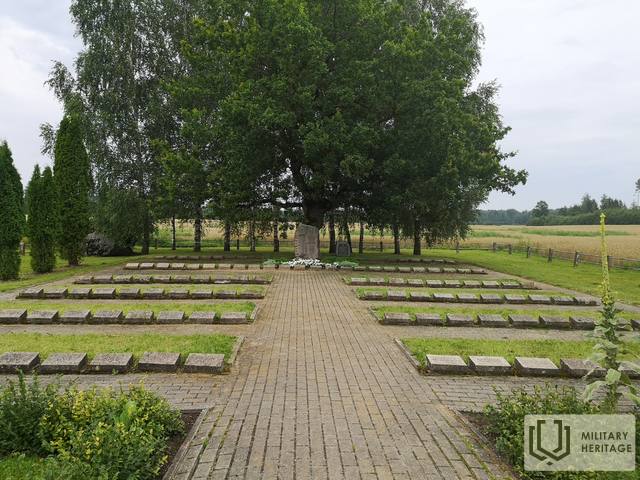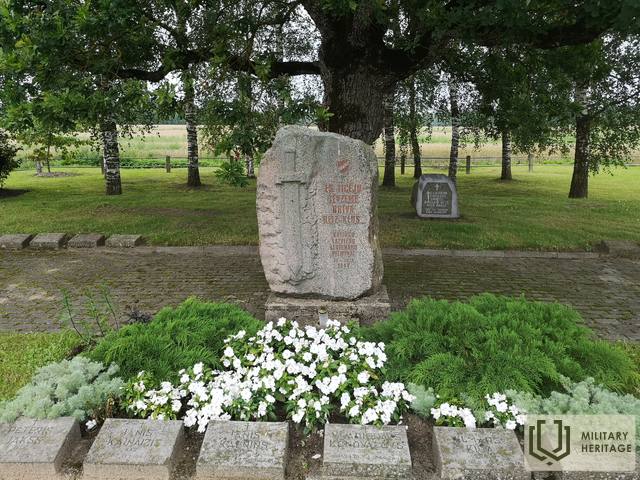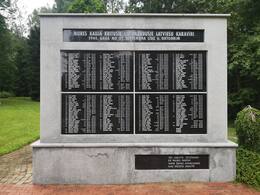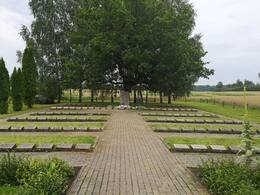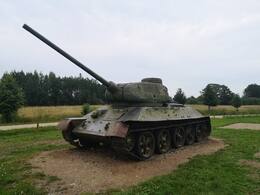Unbekannte Soldaten. Die Geschichte eines Kampfoffiziers.
Die Schlacht von Mores ist eine Episode des Endes des Zweiten Weltkriegs, die im weiteren Verlauf des Krieges auf dem Territorium Lettlands von großer Bedeutung war. Die Schlacht von Mores markiert den Krieg in der Verteidigungslinie von Sigulda auf dem Territorium der Gemeinde Mores, der vom 25. September bis 5. Oktober 1944 stattfand. In den etwa 12 km langen Schützengräben der Sigulda-Verteidigungslinie hielten die Soldaten der 19. Riga.
„2001. Im Juli wurde Mori vom Major der Bundeswehr mit einem Begleiter besucht. Das Hauptinteresse galt der Taktik des Zweiten Weltkriegs. Aus der Kriegsgeschichte ist bekannt, dass die 19. lettische Grenadier-Division von More von einer der bekanntesten russischen Divisionen angegriffen wurde, die von Schatilow. Die Soldaten dieser Division waren sehr gut ausgebildet und verwendeten deutsche Angriffstaktiken. Moré wurde geschlagen, und das war für die Deutschen von Interesse. Die Hauptthemen, die diskutiert wurden, waren die Taktiken des Kampfes. Zum ersten Mal hörten sie als deutsche Offiziere von einigen Aspekten, was bedeutet, dass sie seit dem Zweiten Weltkrieg viel verloren haben. Neu war ihnen beispielsweise die Tatsache, dass der Kommandoposten der Kompanie während der Schlacht von Mores nicht traditionell in der ersten Kampflinie stand, wie es die deutsche Schule lehrte. Die Panzerabwehrkanonen rechtfertigten sich als Verteidigungswaffe an der Front. Die Russen setzten die Panzerabwehrwaffe bei dem Angriff ein und beteiligten sie in der ersten Staffel, aber die deutschen Streitkräfte nutzten diese taktische Lösung gleich zu Beginn des Krieges. Für sie war es nichts Neues. Mori wurde auch von Angehörigen des Zweiten Weltkriegs besucht - dem Panzerkorps von General Steiner, der Panzerdivision "Wiking", der Panzergrenadieredivision "Gotz von Berlichingen" und anderen. Und es gab immer Interesse an taktischen Fragen.“
Roland Convintenko „Ungekühlte Soldaten. Die Geschichte eines Kampfoffiziers.“ R: Circle. 2004.
Zugehörige Zeitleiste
Zugehörige Objekte
Gedenkpark und Denkmal der Schlacht von More
Geschaffen an einem Ort, wo vom 26. September bis 6. Oktober 1944 im Zweiten Weltkrieg heftige Schlachten zwischen lettischen Legionären und Soldaten der sowjetischen Armee stattfanden. An der Schlacht von More nahmen etwa 11.000 lettische Legionäre teil.
Mit der materiellen Unterstützung der kanadischen Abteilung von Daugavas vanagi von Toronto wurde am 10. November 1992 der vom Bildhauer H. Spričs gemachte Gedenkstein für Schlachten von More enthüllt.
Im Denkpark die im Granit der Gedenktafeln 186 Namen der Soldaten, die in der Schlacht von More getötet und verloren wurden und ein Kreuz für die Soldaten, die noch auf dem Schlachtfeld liegen.
Der Park verfügt über restaurierte Fragmente und einen Bunker.
Friedhof der Brüder der Roten Armee aus dem Zweiten Weltkrieg
Im Zentrum von More, am Rande der Hauptstraße, befindet sich der Friedhof der Roten Armeebrüder, wo um 2000 Soldaten begraben wurden, die in der Schlacht von More getötet wurden.Das Grabensemble entstand zweimal nach dem Krieg und 1974, als es landschaftlich gestaltet wurde und das von der Bildhauerin B. Grīsle geschaffene Denkmal hier eröffnet wurde. Das von Grīsle geschaffene Denkmal
Museum der Schlacht bei More
Das Museum befindet sich in More an der Landstraße V319. Es ist den Kämpfen bei More im Herbst 1944 zwischen der Roten Armee und der als Teil des deutschen Militärs kämpfenden Lettischen Legion gewidmet. Gezeigt werden ein Modell zu den Kampfverläufen, Waffen, Militärorden, Uniformen und Militärtechnik. Das Museum mit Park zur Erinnerung an die Schlacht von More wurde von ehemaligen Soldaten der Lettischen Legion - Teilnehmern der Kämpfe bei More – ins Leben gerufen. Im Gedenkpark liegen Schützengräben, Unterstände und Kampfstätten. Die Kämpfe in der Umgebung von More waren Teil der großangelegten Offensive der Roten Armee im Baltikum, an der insgesamt 900.000 Soldaten und enorme Bestände an militärischem Gerät zum Einsatz kamen. Die Umgebung von More war Teil des Befestigungssystems der deutschen Wehrmacht. Lettische Legionäre vereitelten hier Durchbruchsversuche der Roten Armee in Richtung Riga. Dadurch konnte die Wehrmacht Kräfte aus Estland zurückziehen und eine Niederlage verhindern. Die Führung der Roten Armee glaubte, dass der Widerstand des Gegners bei More schnell gebrochen werden könne und setzte ihre unvorbereiteten und unkoordinierten Angriffe hartnäckig fort. Dies führt zu schweren Verlusten. Die Vorteile des Geländes und die Kampfkraft der lettischen Legionäre spielten eine entscheidende Rolle im weiteren Verlauf des Krieges. In More gibt es einen Bruderfriedhof für die gefallenen lettischen Legionäre sowie einen Soldatenfriedhof für die gefallenen Rotarmisten.




